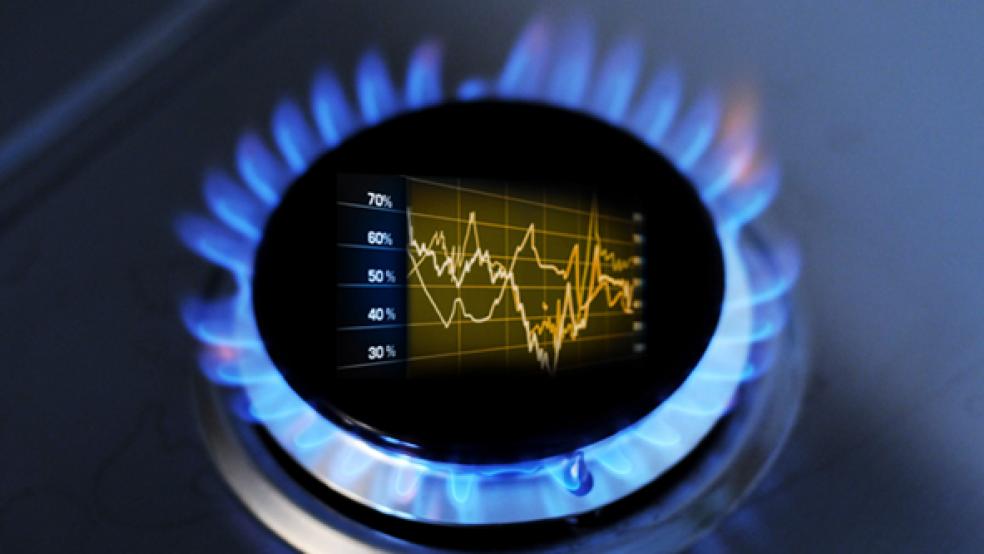Soaring crude oil prices have been grabbing the headlines as they hover above $100 a barrel amidst concerns about Iran’s possible confrontation with Israel and the West. In their shadow, however, another big energy story has been hiding. Natural gas prices, ironically, have set a string of 10-year lows throughout 2012 so far.
The two trends are not entirely separate. As energy producers have set off to drill for oil, encouraged by the lofty prices, they have also found natural gas. Meanwhile, new drilling technology means it’s possible to extract more natural gas than ever before from previously inaccessible rock formations (including the infamous “fracking”). On top of that, demand has been anything but rosy. Inventories are almost 44 percent higher than this time last year, thanks to warmer-than-average winter weather, and so utilities haven’t been drawing down stored reserves to deliver to consumers. And winter is ending early, with temperatures in parts of the country 10 to 20 degrees above seasonal norms.
The “norm” for natural gas may not be seen again any time soon, analysts say. That norm is traditionally calculated on how much oil and how much natural gas it takes to produce a comparable unit of energy – and the relationship is completely out of whack right now. That might cause investors to be optimistic that there’s a light at the end of the tunnel, but analysts caution that is far too premature. “Forget about $5 natural gas. When can we get back to $3?” analysts at Raymond James wondered in a report to investors. (Natural gas prices currently hover at around $2.37 per thousand cubic feet.)
Some big gas producers, like Southwestern Energy, are still generating profits because they have boosted production to offset the decline in prices. Of course, that simply exacerbates the problem by flooding the market with more supply. Chesapeake Energy Corp., for its part, plans to cut output by about 8 percent; since it doesn’t hedge its gas production, price movements and commodity price volatility more dramatically affect it.
It’s hard to see a scenario where things improve before the first snows of winter – next winter, that is. Storage reservoirs are bulging with so much gas that some producers are likely to either shut down production or (if they are also producing oil) simply flare the gas – burning it off – at the wellhead. Even a company that manages its gas exposure judiciously – that has hedged its price exposure and judiciously balanced the challenge between maximizing revenue by ramping up production without wreaking havoc on the price – is going to feel the pain as prices fall further this spring and summer, a time of weak seasonal demand.
To be sure, there’s an argument to be made in favor of owning the share prices of utilities that are likely to invest heavily in new gas-fired power generation facilities. Dominion Resources plans to replace two old coal-fired plants with a $1 billion natural gas plant in Virginia, for instance. There’s some upside potential there, as well as a respectable dividend of 4.1 percent. Dominion is also intriguing because of its LNG terminal in Maryland that the company hopes to transform into an export facility.
As gas prices have plunged, the prices that Dominion can get from wholesale sales of electricity, produced using natural gas have also fallen. For long-term investors, able and willing to look past the slump in the company’s core business of utility sales and its merchant power business, such utility stocks might be more appealing as part of a slow-growth, high-income portfolio.
While gas-producing companies pray that consumers will suddenly demand an end to cars fueled by gasoline, and will switch en masse to natural gas-powered automobiles, it might be wise for investors who want to pay for those new cars to steer clear of any company whose profits are tied in any way to natural gas prices.



